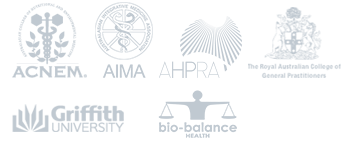Your liver is the key detoxification organ in your body and is situated on the upper right side of your abdomen, just below the ribs on that side. Along with removing toxins from the body, your liver processes food nutrients and helps to regulate body metabolism. This is why when your liver is damaged you start to accumulate harmful toxins in your body, you do not process food nutrients as efficiently, and your metabolism can really take a hit.
A range of conditions can prevent the liver from performing its vital functions. The most common of which that I see in clinical practice is fatty liver disease and toxin damage. When our liver is not functioning optimally due to these situations we do not feel very well at all. In fact, it can so significantly impact our health that I have seen individuals completely debilitated by liver disease.
One patient in particular comes to mind. He was an otherwise fit gentleman of normal body weight but had found that, in recent years, he was overindulging in what he called ‘the good life’. Too much alcohol, caffeine and café lunches had lead to some liver damage. His main symptoms were fatigue, itchy skin especially at night time, and an offensive taste in the mouth that he described as sometimes metallic. These symptoms were really starting to affect his quality of life to the point where he was taking time off work thinking he must be stressed. When he made some necessary lifestyle adjustments these symptoms largely resolved.
So what exactly are the functions of the liver and how do we restore and/or protect it so that it can continue to function well?
Functions of the Liver
The liver has over 500 essential functions to keep the body healthy. Some of the many functions of the liver include:
- Toxins, medications, and drugs including alcohol, are filtered through the liver and neutralised or converted into other forms by specific enzymes.
- Bile, produced by the liver, is stored in the gall bladder and used to help break down dietary fats. Bile is also needed in order to absorb the fat soluble vitamins A, D, E, and K.
- The liver converts carbohydrates into glucose for instantly available energy and converts glucose into its storable form (glycogen). When blood sugar levels drop, glycogen is converted back into glucose.
- It synthesises cholesterol and produces the lipoproteins needed to transport cholesterol throughout the body including low-density lipoprotein (LDL) cholesterol and high-density lipoprotein (HDL) cholesterol. Hence, when the liver is not functioning effectively, cholesterol levels begin to rise.
- The liver is the major fat-burning organ regulating fat metabolism. A healthy liver metabolises rapidly, keeping weight stable. A sluggish liver causes calories to be stored as fat rather than used for energy.
- Amino acids from protein are sent to the liver for the production of body proteins such as hormones.
- The liver changes ammonia (a toxic by-product of protein metabolism) into urea, which is then excreted in urine.
- It regulates blood clotting.
- It resists infections by producing immune factors and removing bacteria from the bloodstream.
Common Symptoms of Liver Damage
Symptoms of liver damage depend on the disorder, but can include:
- Fatigue
- General malaise (feeling unwell)
- Nausea
- Vomiting
- Itching
- Diarrhoea
- Appetite loss
- Bloated abdomen, swollen ankles
- Abdominal pain in the upper right side
- Easy bruising
- Reduced immunity
- Jaundice (the skin or whites of the eyes turn yellow)
- Dark urine
- Fever
- Anaemia
- Changes in mental state – altered sleep pattern (awake at night), confusion, drowsiness.
Health FACT . . . . . . . . . . . . . . . . . . . . .
Fatty liver is the most common of liver damage and can cause symptoms of fatigue, inability to lose weight, right-sided upper abdominal pains, and nausea.
#healthyhabits #healthyliver
Dr Cris
Author ‘Healthy Habits, 52 Ways to Better Health‘ and Healthy Liver



